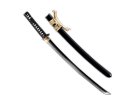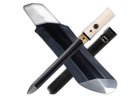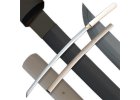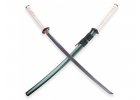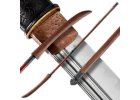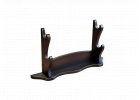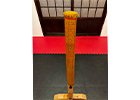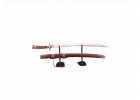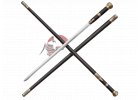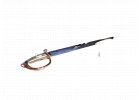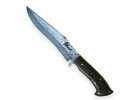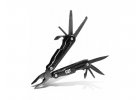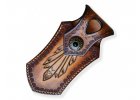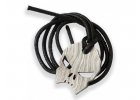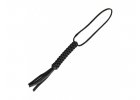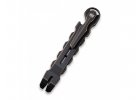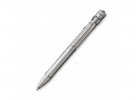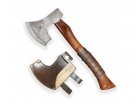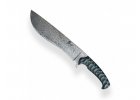Naginata (Japanese: なぎなた or 薙刀) is a traditional Japanese weapon used by samurai. Naginata is associated with women in modern Japan, and women actually study (learn to fight) it more than men, whereas in Europe and Australia, naginata fighting is mainly (but not exclusively) practiced by men. The naginata consists of a wooden carriage and a blade at the end of it; it is similar to the Chinese Guan Dao or the European halberd, or better still, the so-called kusa. Usually the naginata also had a guard between the blade and the carriage, similar to the guard of a sword - the TSUBA.
#ShowMore#
Naginata has a rich history in Japanese culture and warfare. It originally originated as an infantry weapon for fighting mounted riders, where the combination of a long hilt and curved blade allowed warriors to strike a horse or rider from a distance that gave them an advantage over traditional swords. Its flexibility also made it useful in difficult terrain where traditional swords were not as effective.
During the feudal period of Japan, the naginata became a symbol not only of the samurai but also of the female onna-bugeisha warriors, who often learned to use the weapon as part of their defence. In many families, the naginata was a weapon that mothers passed on to their daughters, and thus also became a symbol of female strength and defensiveness.
Today, naginata is still a part of traditional Japanese martial arts, especially in disciplines such as naginata-jutsu and the modern sport version of naginata-do. Training with naginata requires precision, strength, and balance, and includes specific techniques for slashes, points, and defense. The traditional metal blade has been replaced with wooden or other safe materials that allow the techniques to be practiced in a safe environment.

_-_edited.png)
